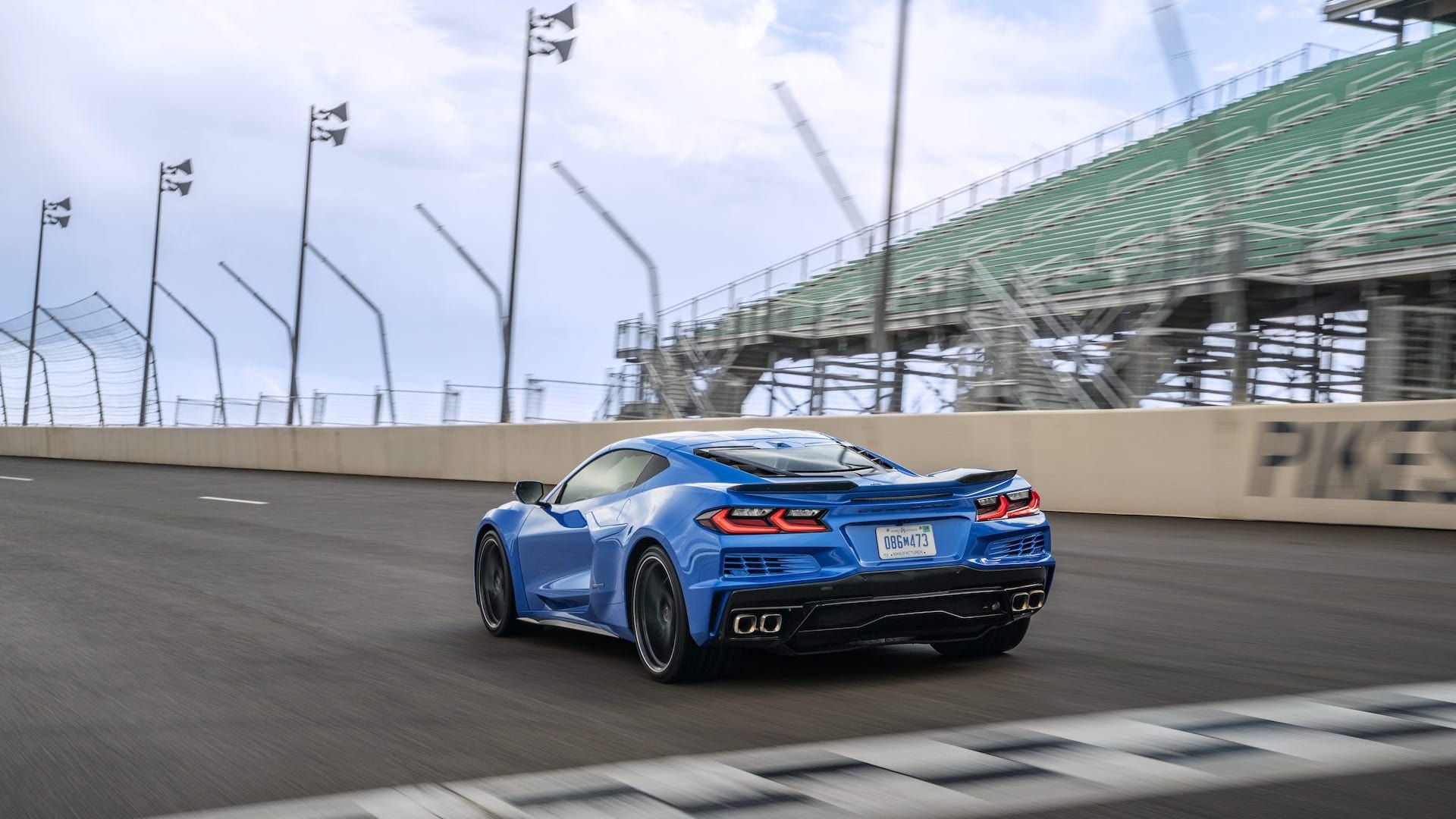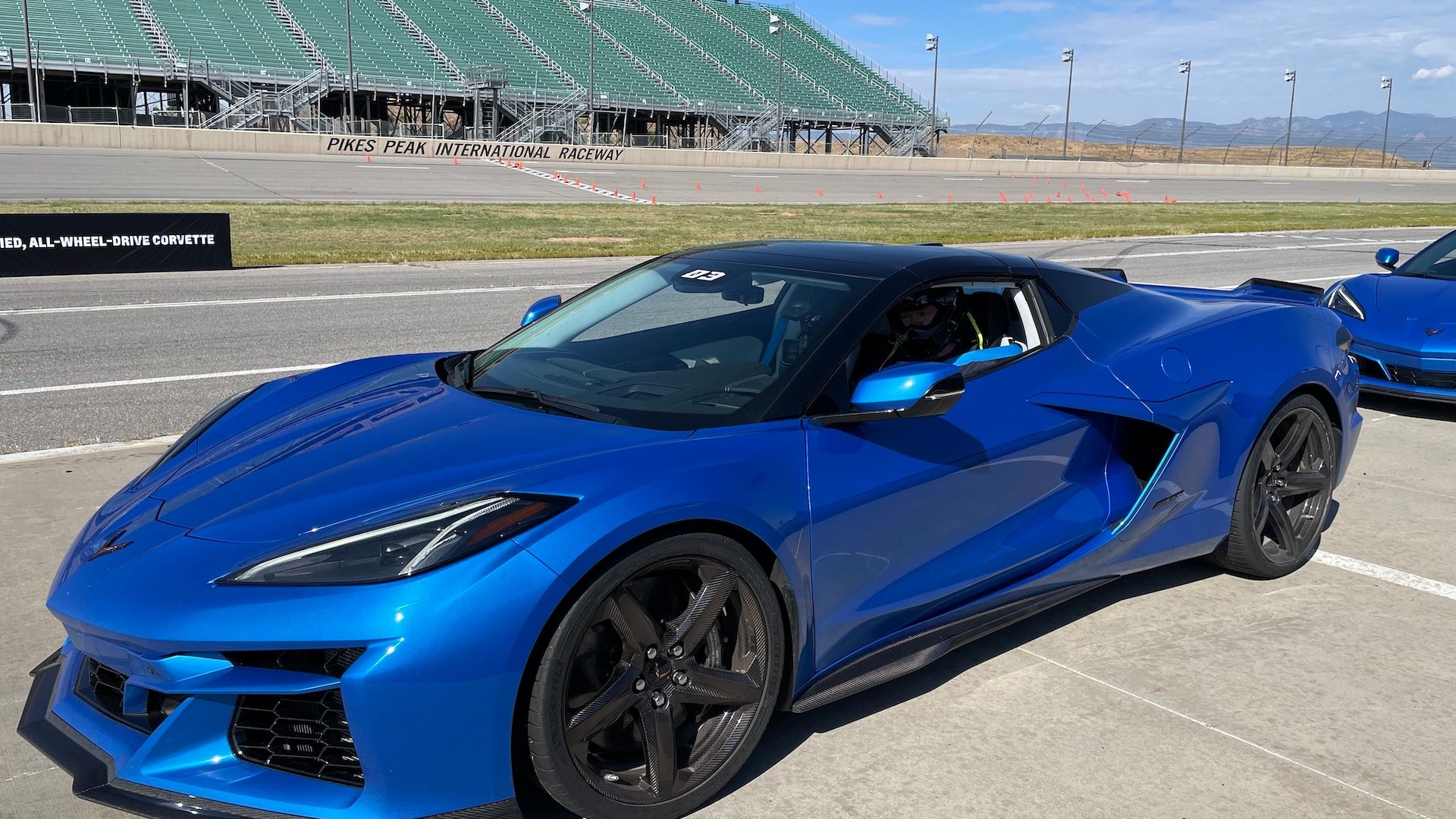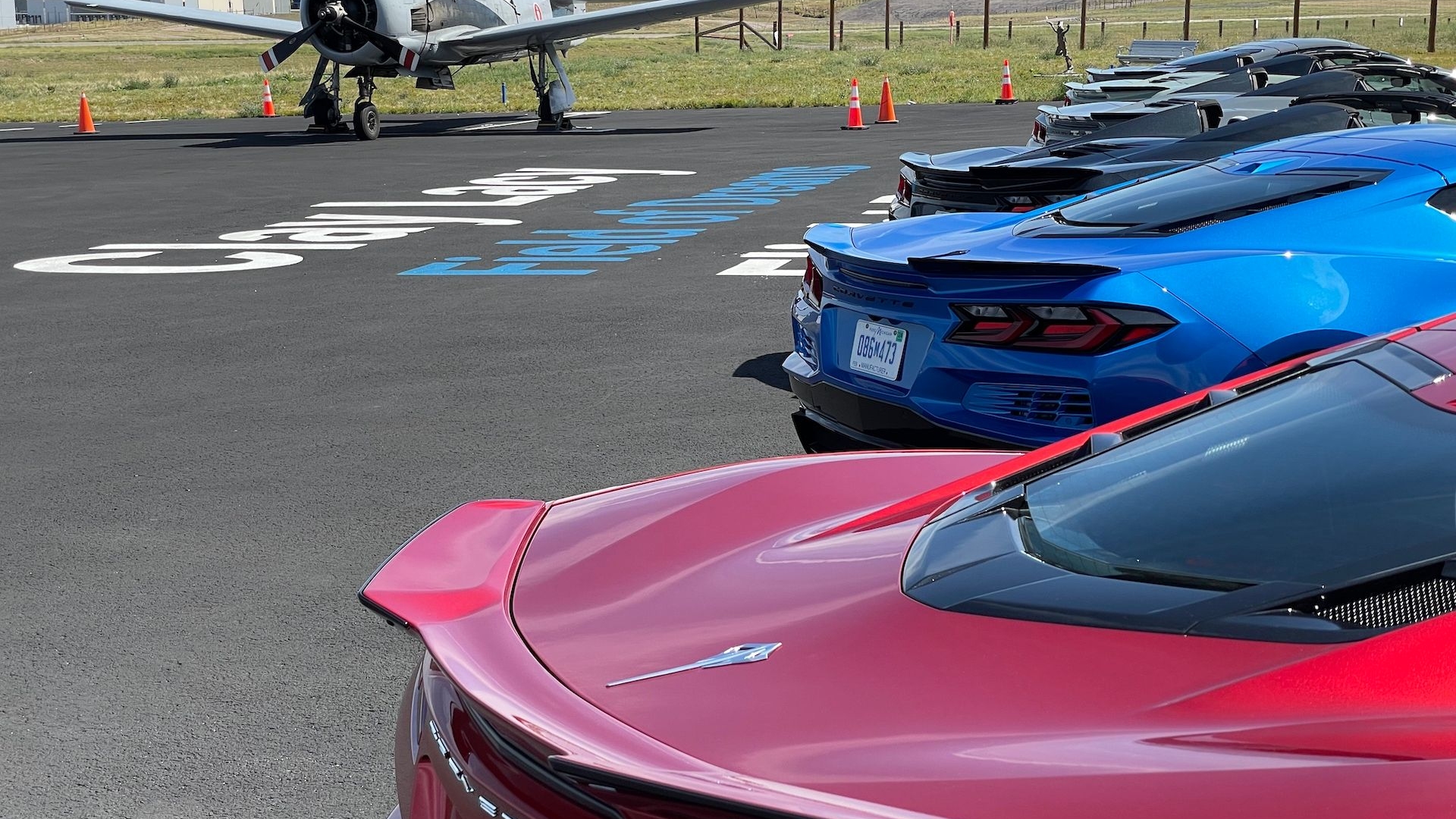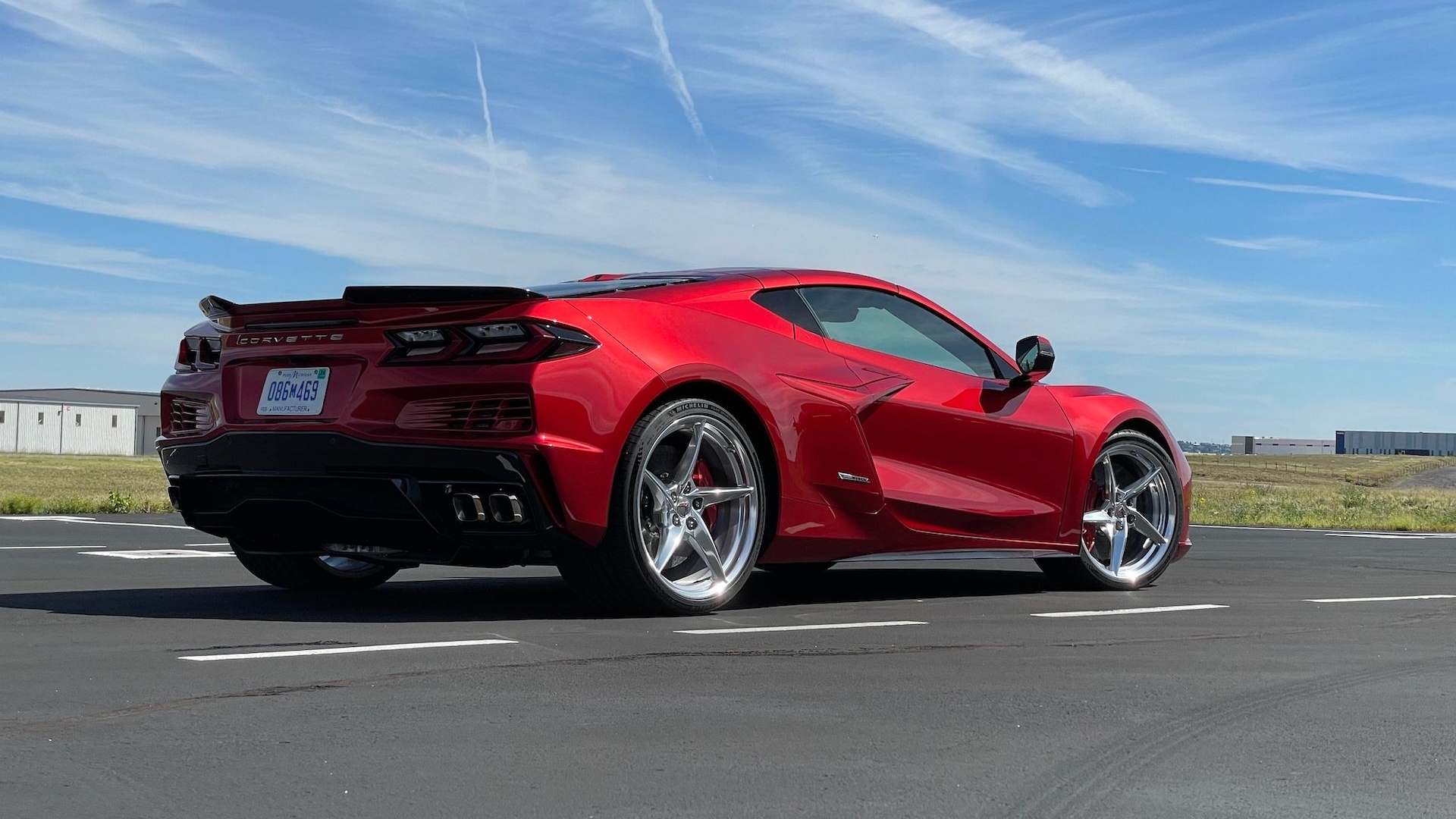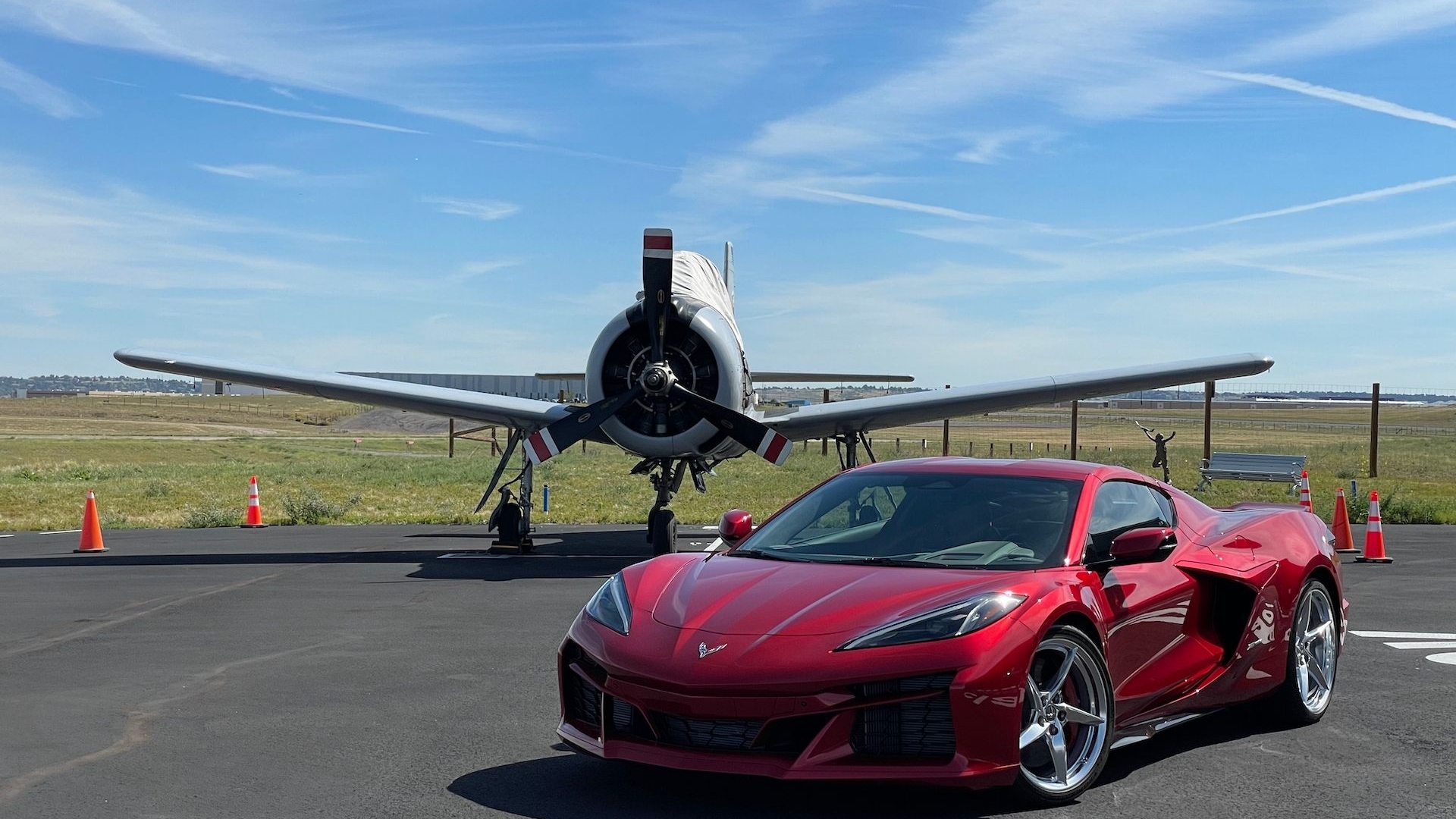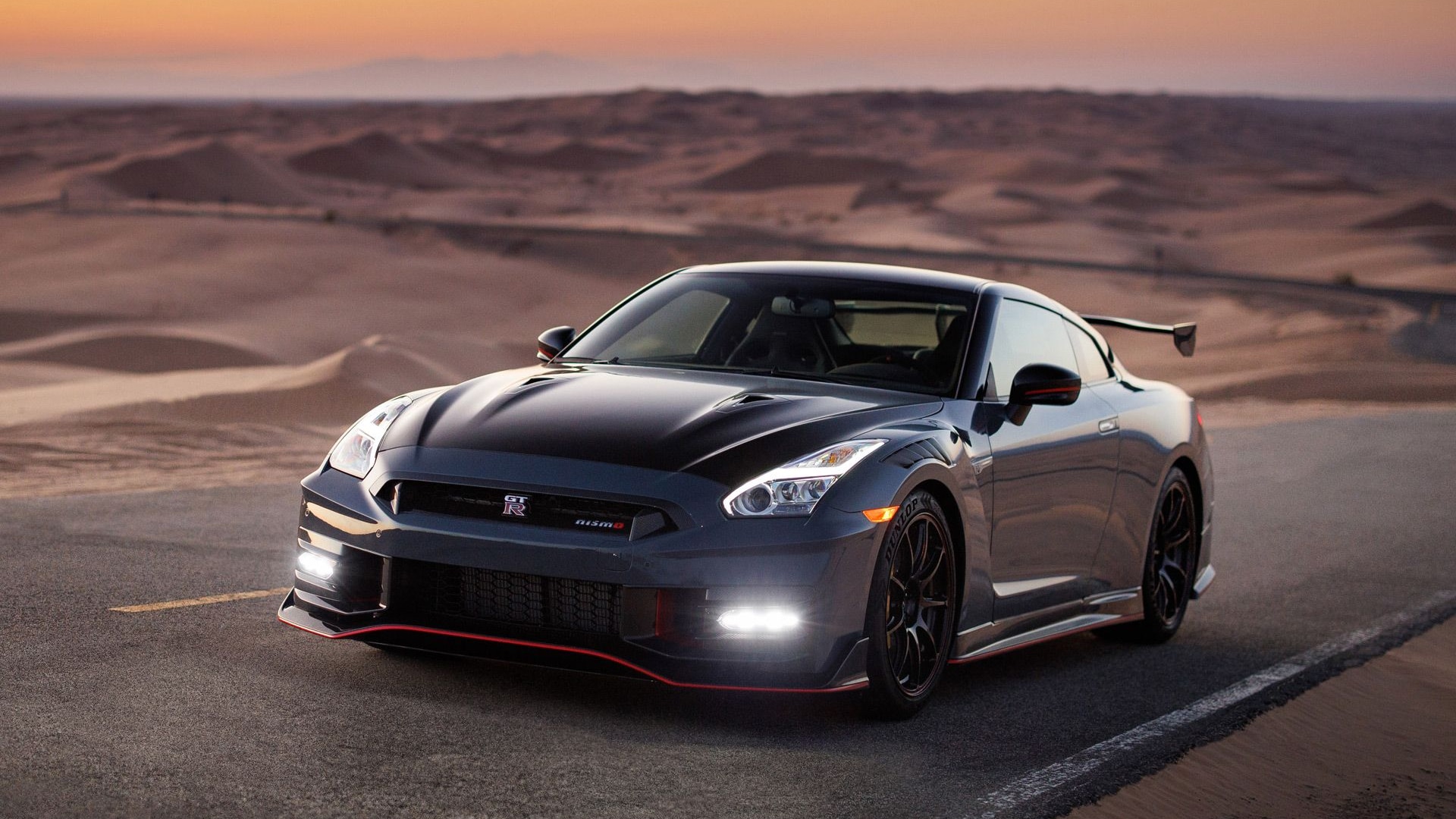I can’t stifle the giggle as smoke billows from the rear tires of the 2024 Chevrolet Corvette E-Ray during a glorious drift in the parking lot at Pikes Peak International Raceway. As the first-ever all-wheel-drive Corvette, drifting shouldn’t be so easy, but Chevy engineers shared the technique before my run: pin the throttle and control the drift with steering inputs. They were right, and I love it.
The 160-hp permanent magnet electric motor on the front axle is trying to straighten out the drift, but 495 is greater than 160 and the rear wheels are having their say. Keeping the throttle pinned overrides the front motor with the engine and lets the car know I intend to drive with such controlled chaos.
Chaos isn’t the point of the Corvette E-Ray at all, though. As the next evolution of ’Vette hardware, it nudges the fledgling supercar into the new specs that will define it in the decades to come: all-wheel driven, electrified, and finally, electric.

2024 Chevrolet Corvette E-Ray
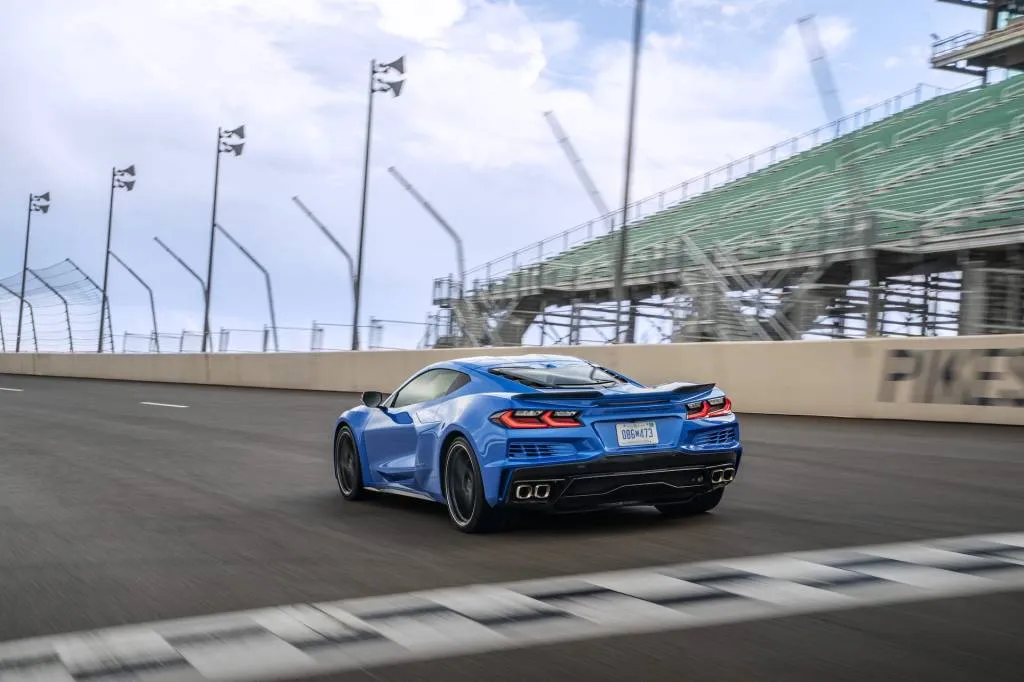
2024 Chevrolet Corvette E-Ray
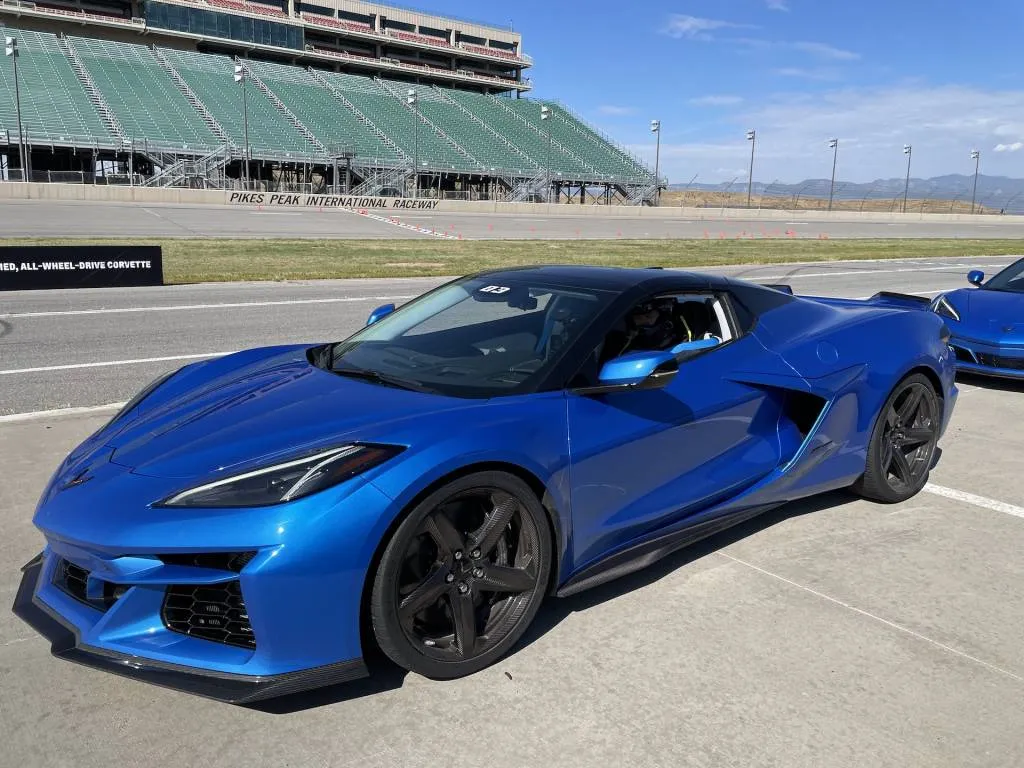
2023 Chevrolet Corvette E-Ray
2024 Chevrolet Corvette E-Ray: Hybridized for performance
Turning today’s mid-engine Corvette into an E-Ray takes some forward-looking technology—that’s been on the Acura NSX and some Ferraris before it, and now is being embraced by Team Corvette.
The front motor is powered by a 1.9-kwh battery pack made of four modules and 20 pouch cells mounted in the central tunnel. Drivers can tap into 1.1 kwh of that total to aid acceleration through the car’s default Normal mode that drivers will use almost all the time. All told, the hybrid/all-wheel-drive system adds about 300 pounds to the car, totaling 3,774 pounds for the coupe and 3,886 pounds for the convertible.
Chevy also has two electric driving modes that must be chosen via an instrument cluster upon startup. A Shuttle mode uses EV power all the time, but it’s limited to just 15 mph. It’s really just for moving the car around in the driveway. A Stealth mode is more useful. It allows the car to drive on electric power alone for just 3-5 miles provided they don’t drive more than 45 mph, use more than 30% throttle, or start with more than 0.15 g of forward acceleration. Even after such a run, the battery can provide hybrid power, though, as Chevy provides a 0.8-kwh buffer that is always available. Well, almost always.
Drifting the E-Ray requires running in Track mode and turning off the traction control and stability control. The latter systems can be turned off by pressing and holding the traction control button for five seconds.
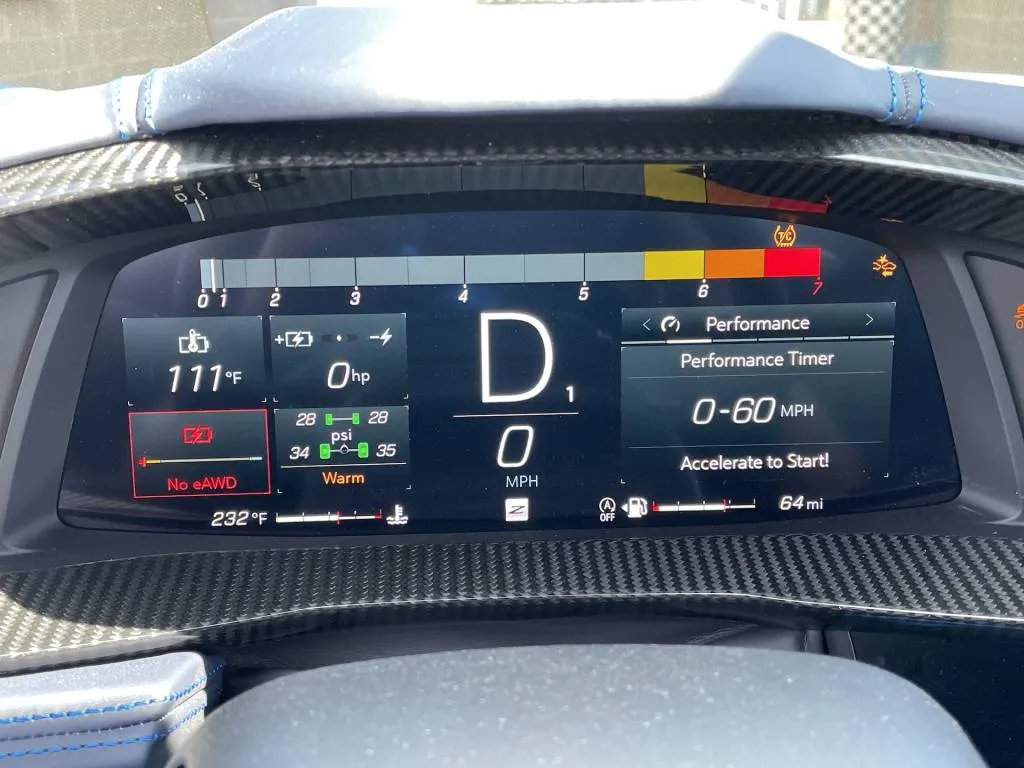
2023 Chevrolet Corvette E-Ray
The exception to that rule is the reason I had such a goofy grin on my face. Big, stupid, wonderful drifts use up all the battery power as the front motor keeps trying to engage. I felt it, too, or at least the lack of it. A short autocross section followed the drift pad, and the power was noticeably less robust once the battery was drained. It’s no biggie, though, because engaging Charge+ on the side of the center console and driving roughly a mile at about 40 mph will fill up the battery, as I learned after my drifting bonanza.

2023 Chevrolet Corvette E-Ray
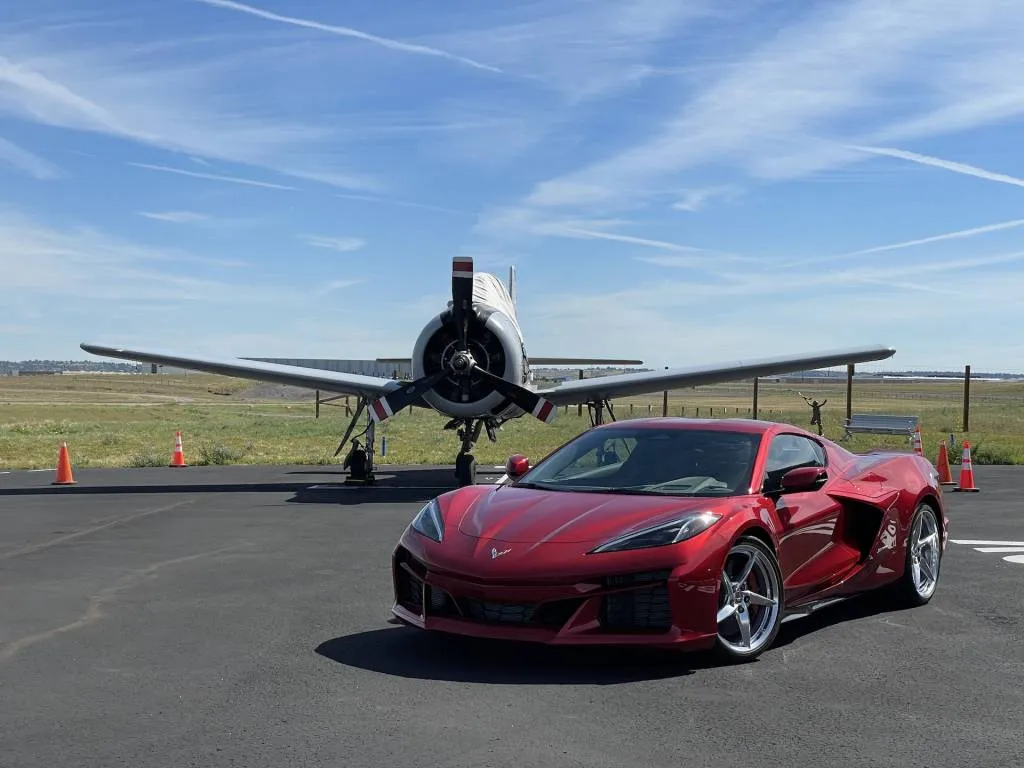
2023 Chevrolet Corvette E-Ray
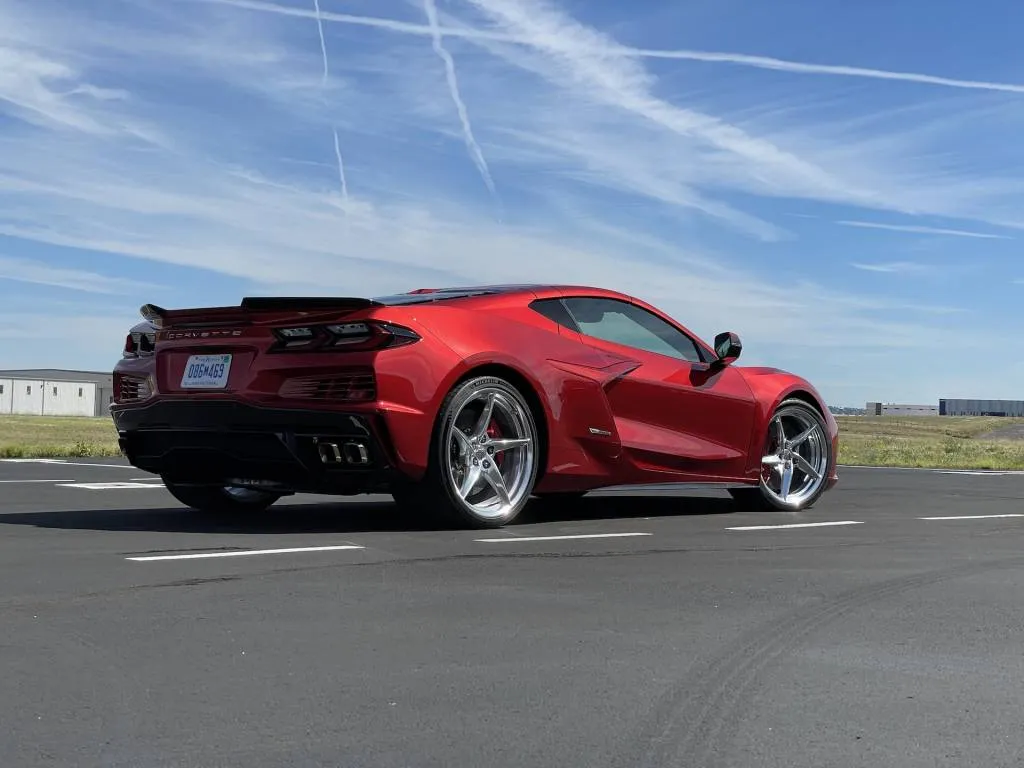
2023 Chevrolet Corvette E-Ray
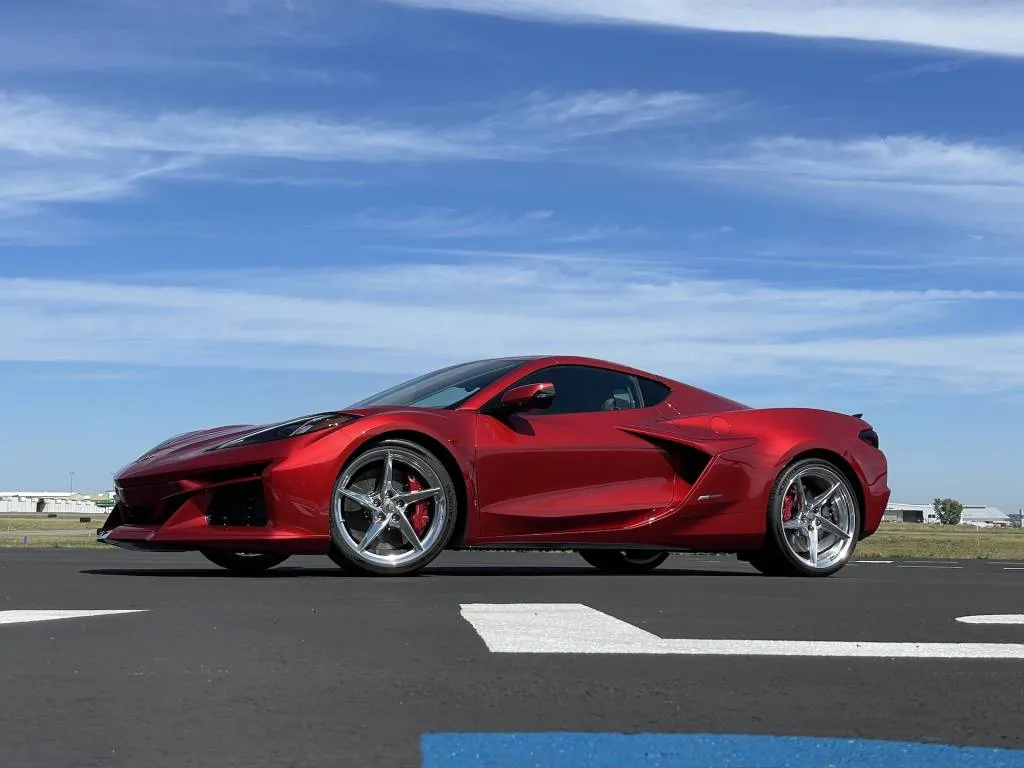
2023 Chevrolet Corvette E-Ray
2024 Chevrolet Corvette E-Ray: Z06 speed and more
The first all-wheel-drive Corvette is also the quickest ever, though not the most powerful. The motor can use its 160 hp and 125 lb-ft of torque to power the car alone. Most of the time, it adds its power to the Corvette Stingray’s 6.2-liter V-8, which makes 495 hp and 470 lb-ft, the same as buyers get with the Stingray’s Z51 Performance Package. Together they combine for 655 hp. That’s just 15 hp less than the Z06, but the engine and motor combine for more torque—though Chevrolet doesn’t quote a combined torque figure.
The extra power and traction of the front motor is what makes it the quickest ’Vette to date. The C8 Corvette’s mid-engine layout already gives it more traction than the front-engine C7, but powering the front tires makes acceleration at launch as efficient as possible. The result is a 0-60 mph time of just 2.5 seconds, according to Chevrolet, a tenth quicker than the monstrous Corvette Z06 and four-tenths quicker than the Stingray. It also unlocks a 10.5-second quarter-mile run, which is also a tenth quicker than the Z06.
Before my drift, a Chevy engineer had me try out the acceleration using the car’s manual launch control feature, which works when the traction and stability control are shut off (a standard launch control feature is also provided when those systems are on).
To access manual launch control, hold both steering wheel paddles to put the 8-speed dual-clutch automatic transmission in neutral. Keep holding one paddle, then release and re-pull the other. From there, press and hold the brake, then roll onto the throttle to bring the revs up to your desired level. Launching at 3,500 rpm, I could feel all four tires slip for a beat then slingshot the car forward. I got up to the same 54 mph before entering a left-hand turn for an autocross as I did with the regular launch control.
The power was noticeably stronger than in the Stingray. The front motor really does aid acceleration, though getting the 0-60 mph time below three seconds would likely require ideal condition and a prepped surface.
From behind the wheel, the E-Ray sounds like the Stingray rather than the Z06. The 6.2-liter V-8 emits its guttural rumble while the electric motor plays along rather silently. The sound is a welcome companion for enthusiasts, but it’s slightly subdued compared to the C7 Corvette or the new Ford Mustang Dark Horse. In the all-electric modes, an artificial exterior sound like a B-movie flying saucer warns pedestrians the E-Ray is near.
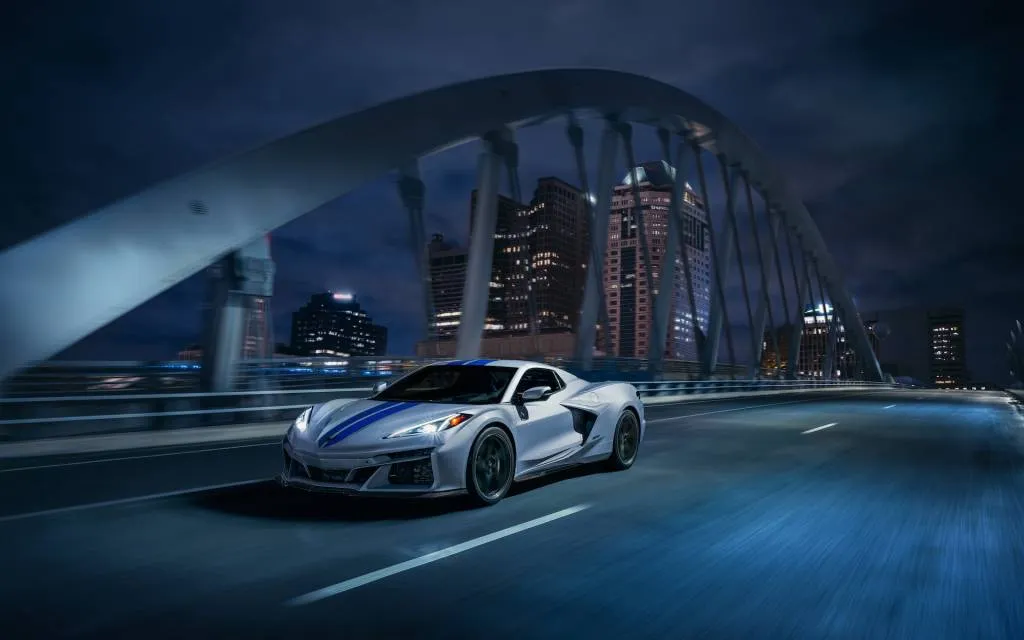
2024 Chevrolet Corvette E-Ray
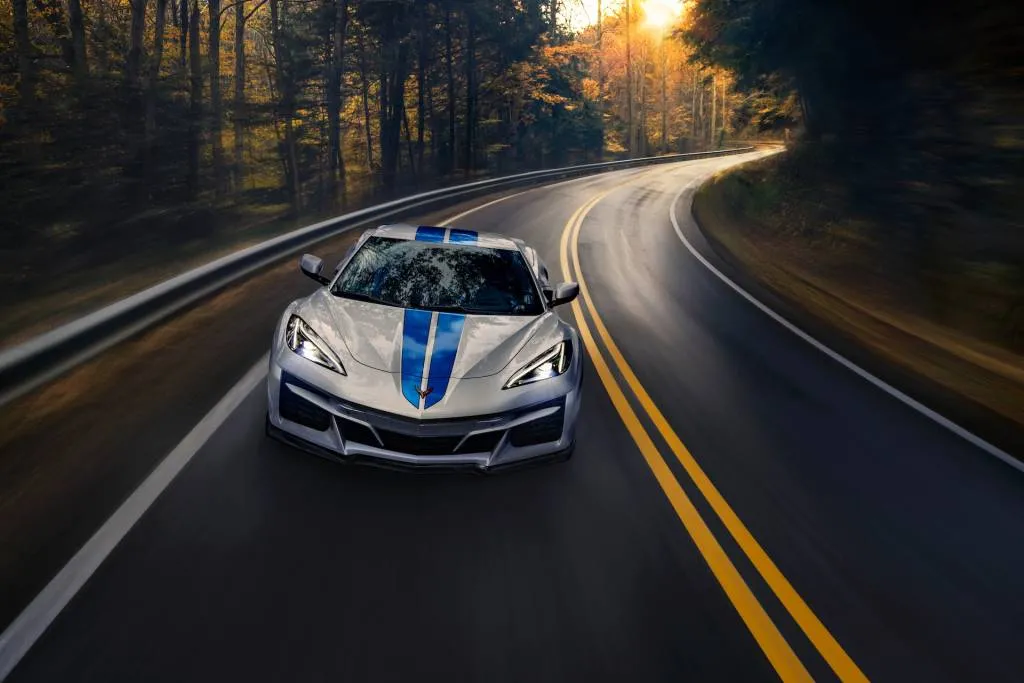
2024 Chevrolet Corvette E-Ray
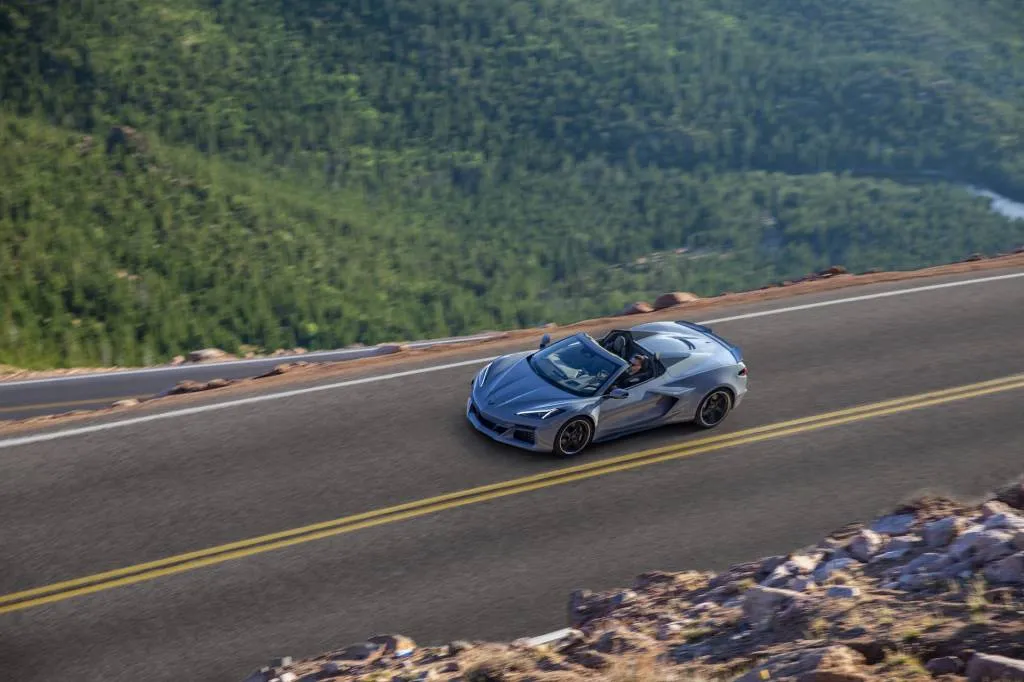
2024 Chevrolet Corvette E-Ray
2024 Chevrolet Corvette E-Ray: A happy medium
The E-Ray looks like a Z06 with some minor changes. It gets that car’s 3.6-inch wider body, ground effects package, and spoiler. It also comes standard with the Z06’s carbon-ceramic brakes and wonderful magnetic dampers. You can tell an E-Ray from the Z06 by the E-Ray logo, a set of five-spoke twist wheels that are the best-looking offered for the Corvette, body color trim instead of black, and on cars so ordered, the available Electric Blue full-length stripes.
Chevrolet tunes the E-Ray’s suspension to be firmer than the Stingray’s with the Z51 Performance Package and softer than the sharp-edged Z06. It’s a welcome change and it makes the E-Ray more livable day to day than the Z06 track scalpel.
It also likely suits it better on a bumpy track like Pikes Peak International Raceway. For our track drive, we’re using a combination of the D-oval and a fairly tight infield circuit for about 1.3 miles of fun. None of it is particularly smooth.
Maybe it’s the suspension tuning, maybe it’s the added stability of all-wheel drive, or maybe I’m getting better acclimated to driving a Corvette, but I feel more confident in the E-Ray than I have in other ’Vettes. The E-Ray comes standard with Michelin Pilot Sport all-season tires that provide enough performance to handle 1 g of lateral acceleration on a skidpad, but the track cars are running Michelin Pilot Sport 4Ss that up the grip to 1.1 gs. That’s a lot of rubber to hold the road. These 4Ss are the same as the base tires on the Z06, as well as the same size: 275/30ZR20 front and 345/25ZR21 rear.
I feel confident as I fling the E-Ray through the backside esses and trust the grip from those massive rollers. The car feels a bit more balanced exiting the tighter switchback corners as the front motor pulls the car out of the turns. In fact, I’m likely going back to throttle a little earlier, just before the apex because of that balance. Though I’ve never spun a C8, this car feels less likely to give up the grip at the rear.
The extra power also becomes evident on the track. In addition to aiding the Corvette’s handling, it pulls harder from corner to corner than a Stingray. Power comes on differently than in the Z06, though. That’s more of a horsepower engine, and this powertrain’s strength is torque. The front motor’s immediate torque helps rocket the E-Ray out of the corners down the straights. The Z06 builds its power more progressively as it winds its way up to its 8,400-rpm horsepower peak. While the E-Ray may be quicker to 60 mph and even in the quarter- mile, the Z06 would pass it on longer straights. The proof is in the top speeds; the E-Ray tops out above 180 mph, while the Z06 can reach 195 mph.
To save power for the full track run, we’re running in Charge+ mode. With it on, an algorithm adds power on corner exit, then tapers off to save power for longer track runs. Turning off Charge+ allows full motor power to be used until the battery drains to the buffer. Charge+ makes the power available for about 20 minutes of track driving, while the so-called “max deplete” mode is good only for a couple of laps. Even when the power is used up, there’s a buffer to add at least some front-drive power for corner exit.
For these track sessions we’re running in the car’s Track mode with the Performance Traction Management system set to Sport. While Race 1 and Race 2 modes are available, they disable the stability control and both Chevy and I prefer the safety of that nanny system. The car’s Performance Data Recorder shows that I activate the ESC from time to time in hard cornering, but I never feel it and it never cuts the power.
I also can’t feel the car’s brake regeneration or the handoff from regen to friction braking. That’s because both are fed into the braking modules and brake feel comes through a brake-by-wire system with a mechanical backup. They don’t fade through a day of track driving, though the brake-by-wire system would prevent that. Stopping distance also doesn’t suffer, likely because the car’s 15.7-inch front and 15.4-inch rear carbon-ceramic rotors are good for much more than a single track day.
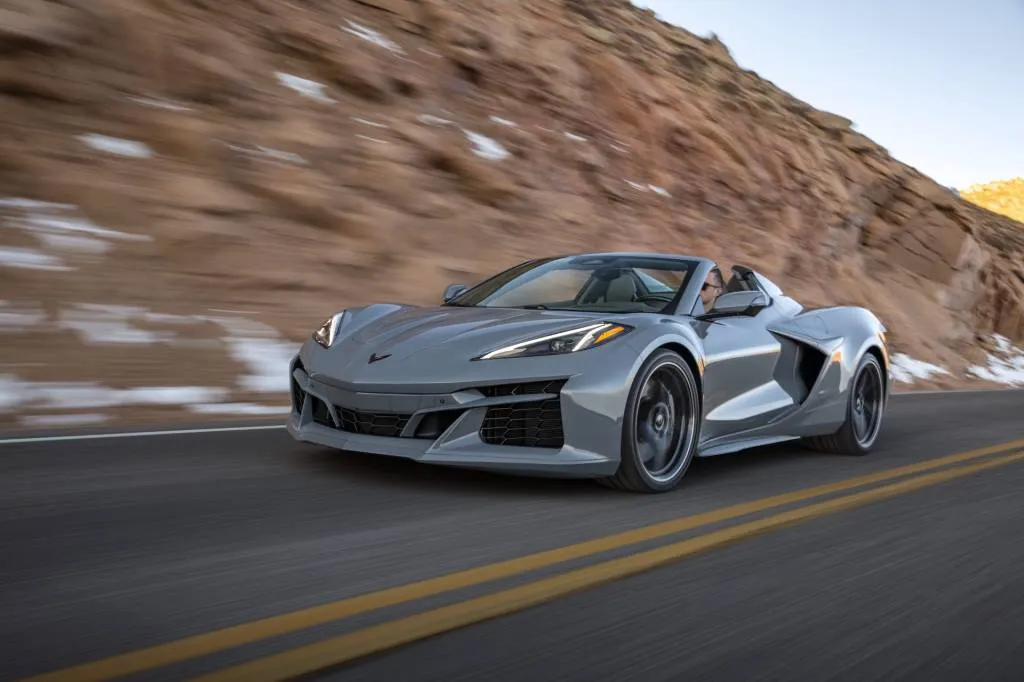
2024 Chevrolet Corvette E-Ray
2024 Chevrolet Corvette E-Ray: A ’Vette for all seasons, sort of
When not going hard on the track, drivers can monitor the car’s performance and hybrid system through the infotainment system’s E-Ray Performance App. Its digital gauges include horsepower and torque graphs during chosen time intervals, engine and electric motor output, efficiency and performance of the electrical system, drive motor speed, high-voltage battery temperature, and drive unit oil temperature. Power flow and state of charge widgets can also be added to the IP.
The E-Ray approaches and in some cases exceeds Z06 performance, and it’s priced accordingly. It starts at $104,295 for the coupe and $111,295 for the convertible, just $2,000-$3,000 less than the Z06, though it doesn’t get that car’s $2,600 gas-guzzler tax. EPA fuel economy ratings aren’t yet available, but Chevy says this E-Ray should come close to the Stingray’s ratings of 16 mpg city, 25 highway, 19 combined rather than the 12/21/15 mpg of the Z06.
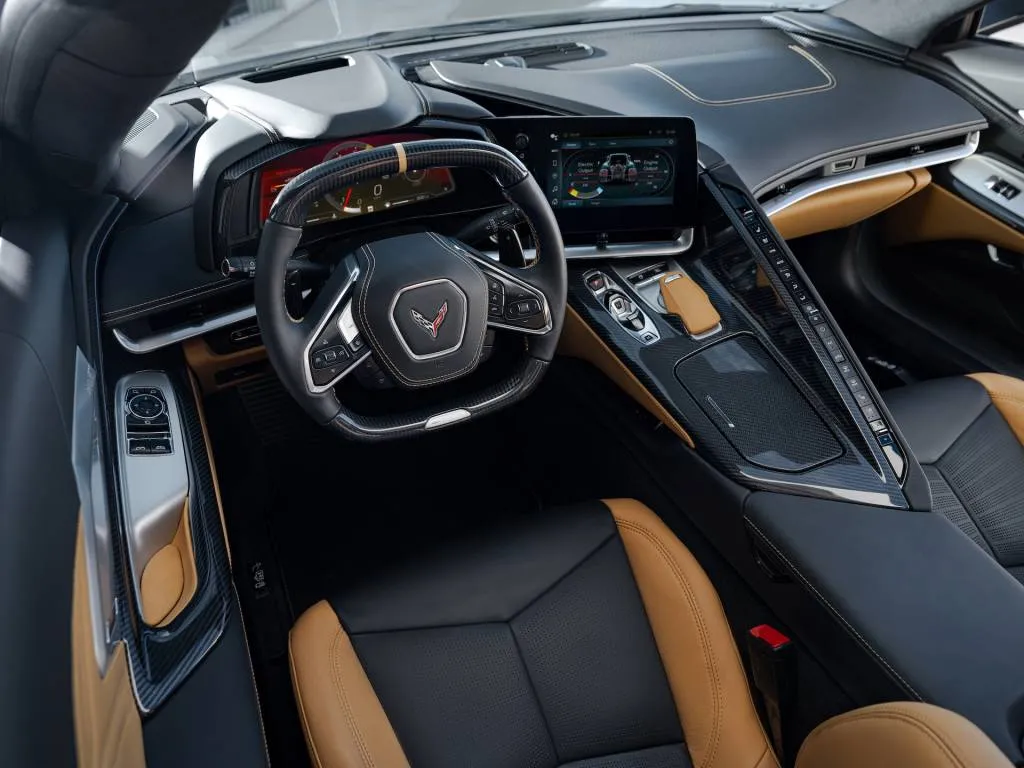
2024 Chevrolet Corvette E-Ray
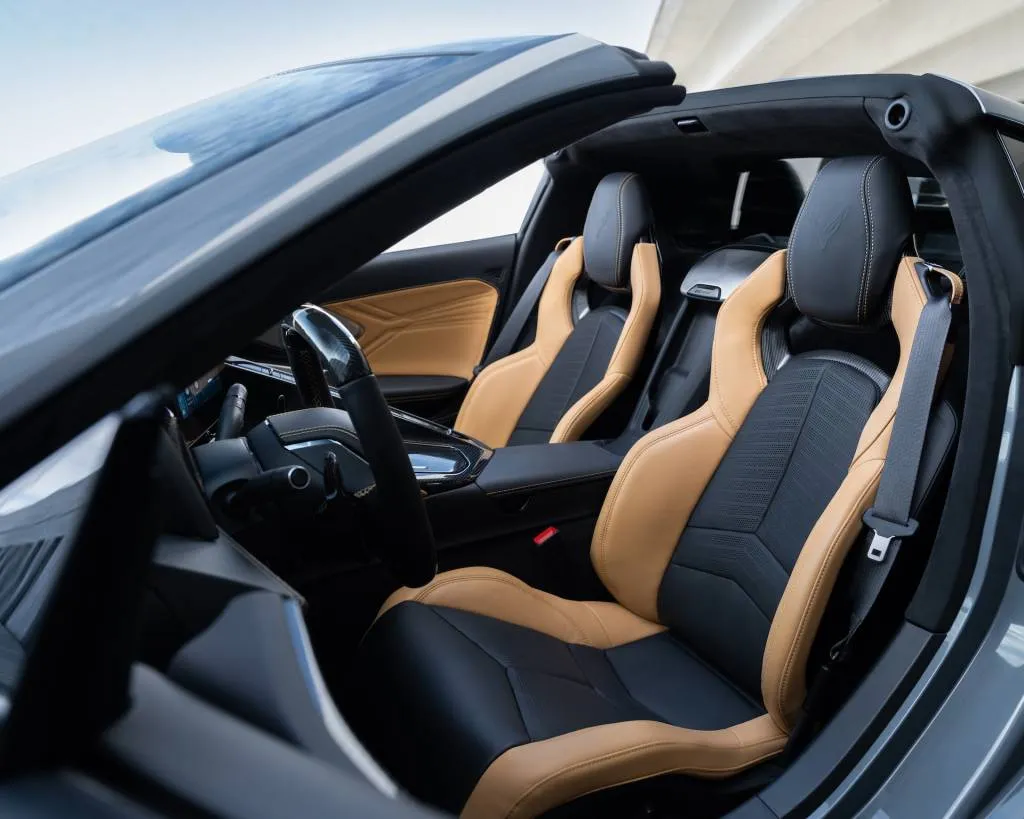
2024 Chevrolet Corvette E-Ray
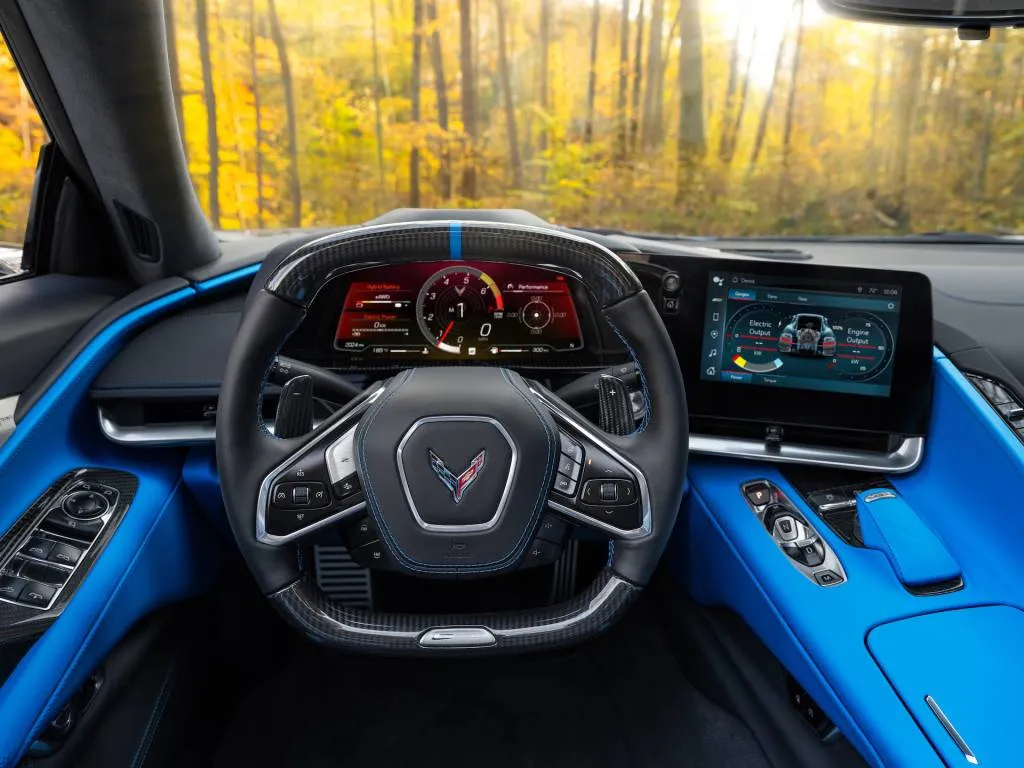
2024 Chevrolet Corvette E-Ray
An additional Performance Package adds 360 pounds of downforce with a wickerbill for the rear spoiler and front splitter and rocker panel extensions, and buyers can opt for carbon-fiber wheels for $12,000-$15,500.
In addition to the many Z06 features mentioned above, the E-Ray comes with a head-up display. It also gets updates that all 2024 Corvettes enjoy, including some much needed safety features, namely automatic emergency braking, active lane control, rear parking sensors, and a rear camera mirror.
With all-wheel drive and all-season tires, Chevrolet bills the E-Ray as a Corvette for all seasons. Given how wide its all seasons are and the ’Vette’s low ride height, it’s probably better for all but snow days. Either way, the E-Ray hits the sweet spot for power, handling, and ride quality for me within the Corvette lineup.
It’s also fairly easy to drift, as long as you know the technique.
Chevrolet paid for travel and lodging for Motor Authority to drive sophomorically and laugh maniacally.

